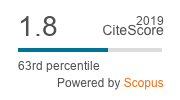Online mixted sampling: An application in hidden populations
Abstract
Purpose: The objective of the article is to explore the possibilities offered by new technologies and virtual social networks for the recruitment of sampling units in hidden populations and as a support of the use of mixed methods.
Design/methodology: The objective was to identify Argentinean entrepreneurs who start their business in Spain. The observation unit has the characteristics of a hidden population: 1) high geographic dispersion which makes it difficult to localize them; 2) underestimation of the size of Argentinean residents in the official statistics; 3) Argentinean residents in illegal situation; and, 4) in some cases, the factors that led the emigration were negative, making them reluctant to answer. In this context, the researchers used (1) an online virtual sampling and, (2) the traditional snowball sampling. The online virtual sampling was carried out by using a social network (Facebook) through which 52 virtual groups of ‘Argentinean living in Spain’ were identified. Subsequently, each member was contacted by an individual message which explained the aim of the research and invited them to participate in the study.
Findings: Through the development of this study, it was possible to prove that the use of virtual groups in social networks led to detect observation units that are not registered officially (administrative register, census, etc.). This finding contributed to increase the scope and size of the sample, it favoured the design of the qualitative sample and the triangulation of the results. Therefore, it increased the validity of the hidden population.
Originality/value: The article presents an experience of application of virtual sampling and mixed methods in the study of hidden populations. In particular, it analysed Argentinean immigrant entrepreneurs by using virtual groups as a source of information.
Keywords
DOI: https://doi.org/10.3926/ic.294
This work is licensed under a Creative Commons Attribution 4.0 International License
Intangible Capital, 2004-2024
Online ISSN: 1697-9818; Print ISSN: 2014-3214; DL: B-33375-2004
Publisher: OmniaScience








